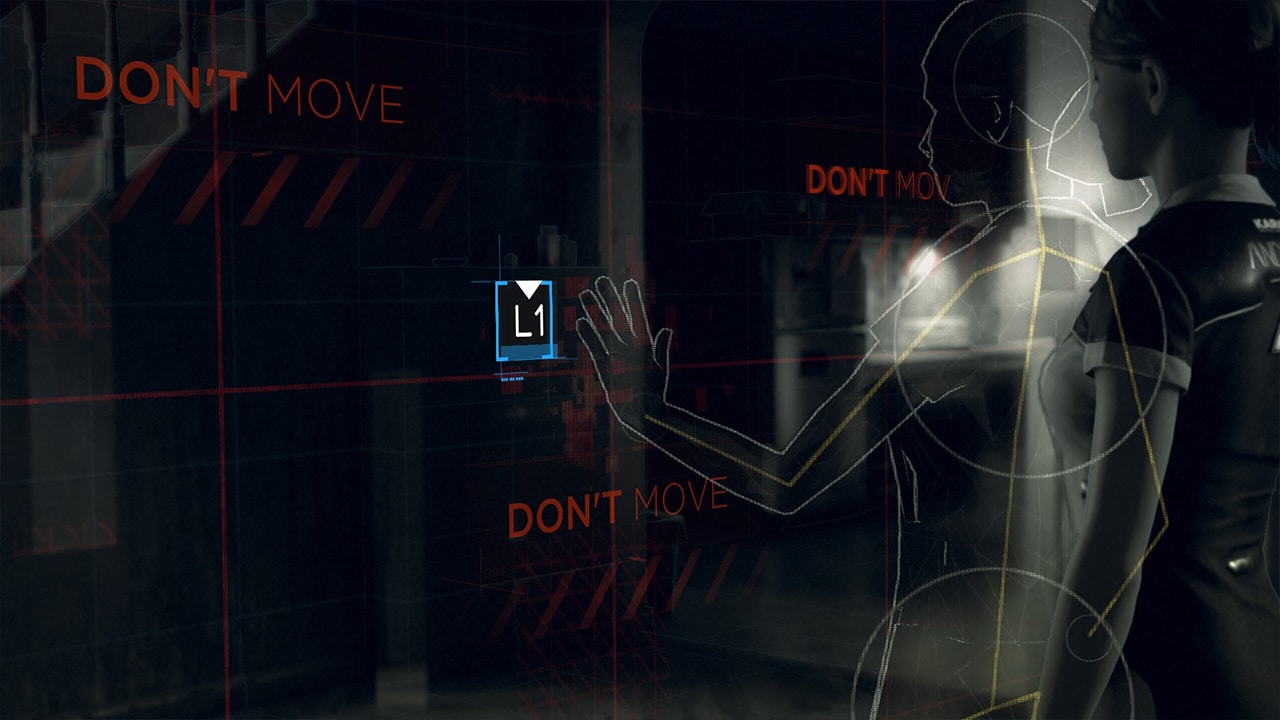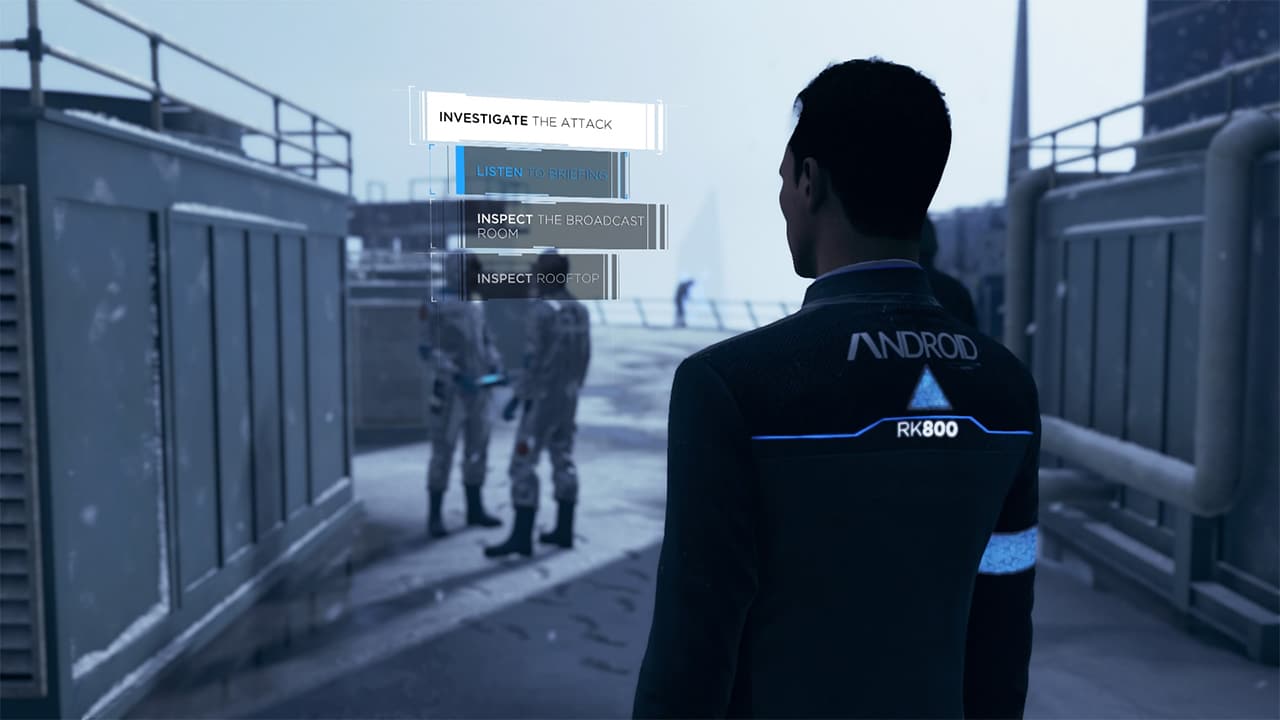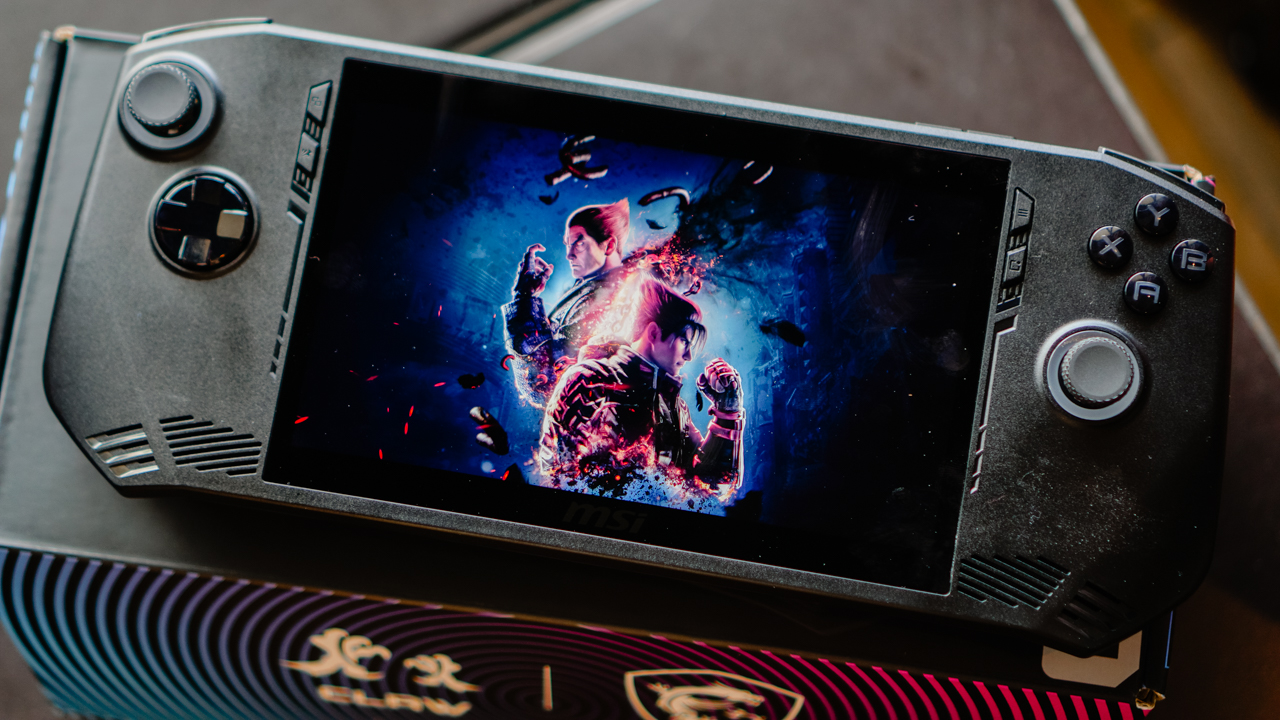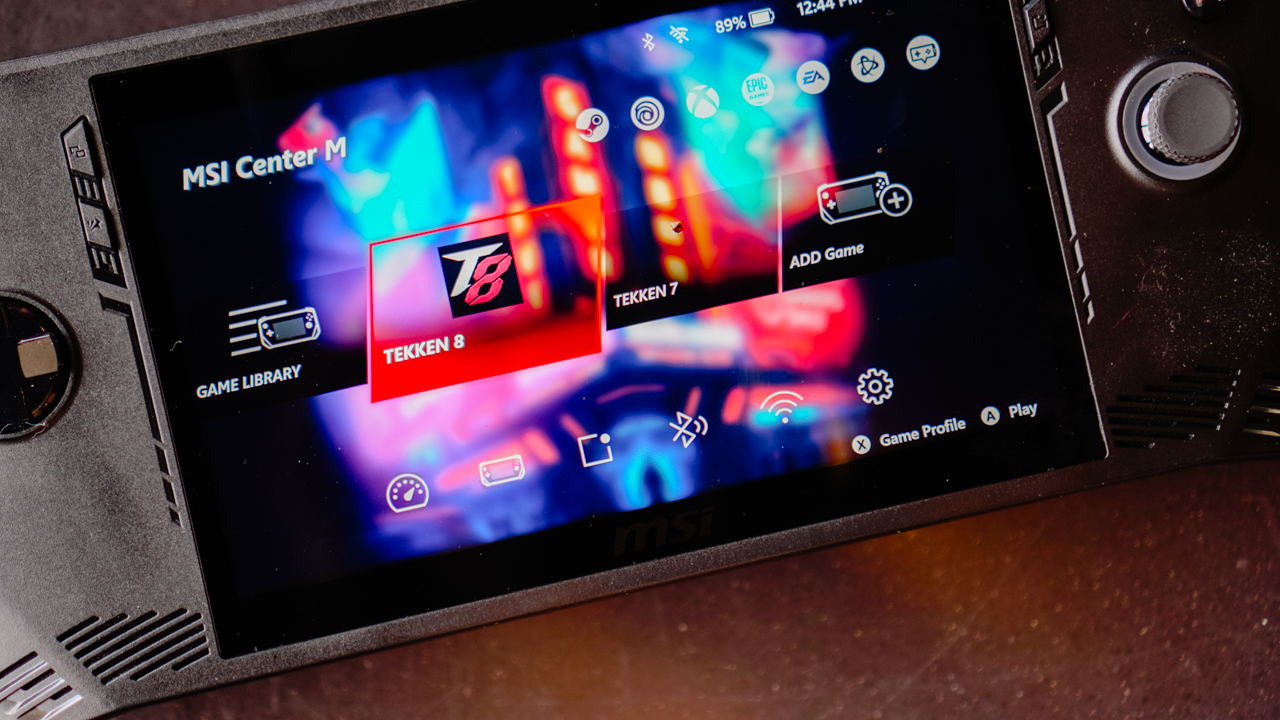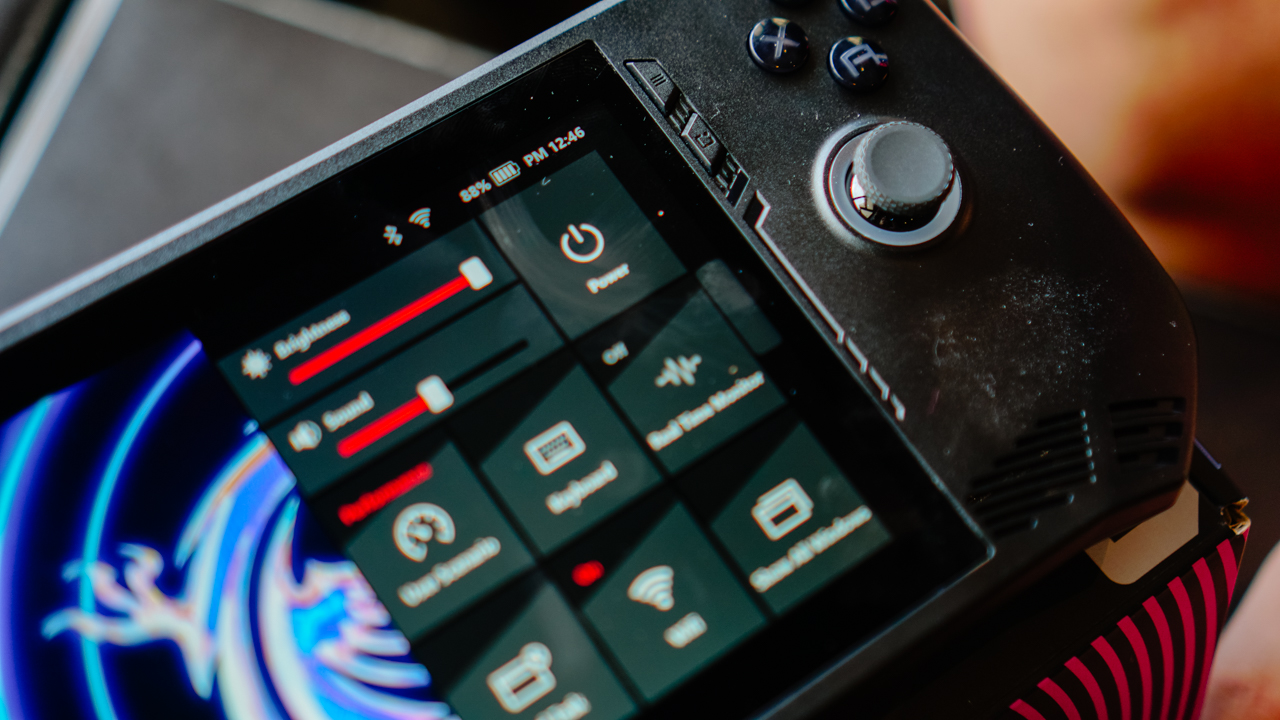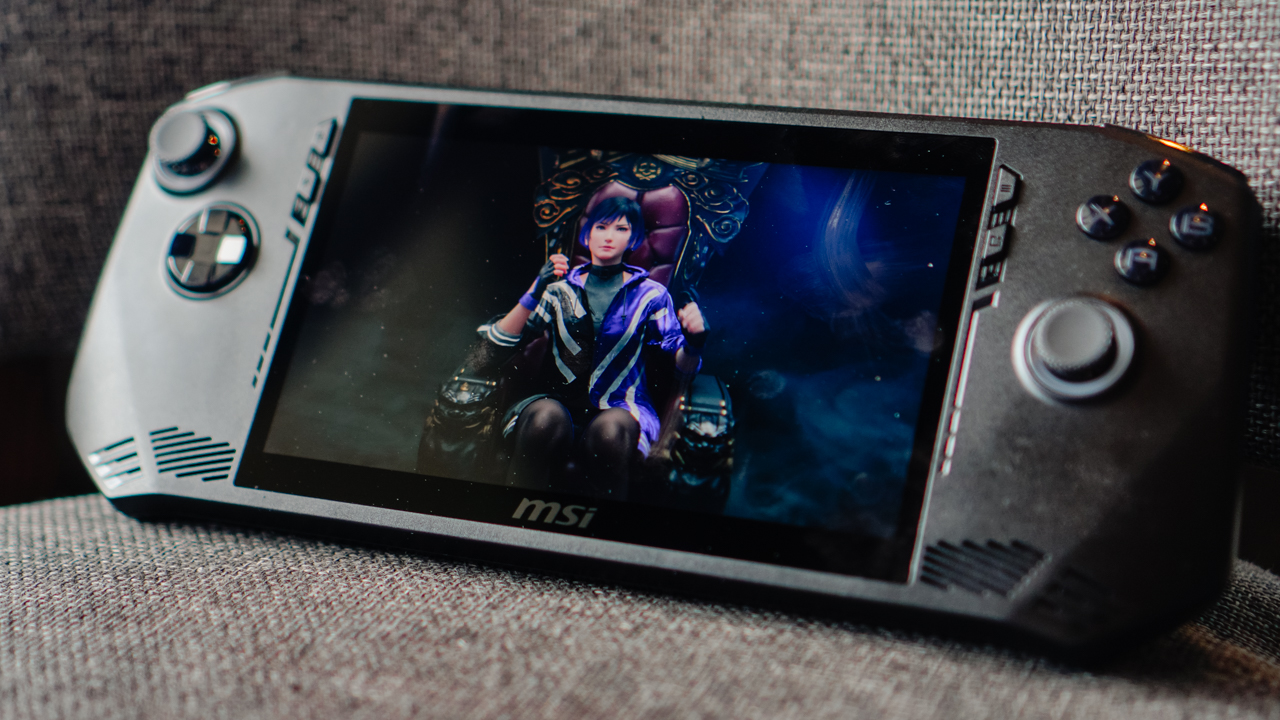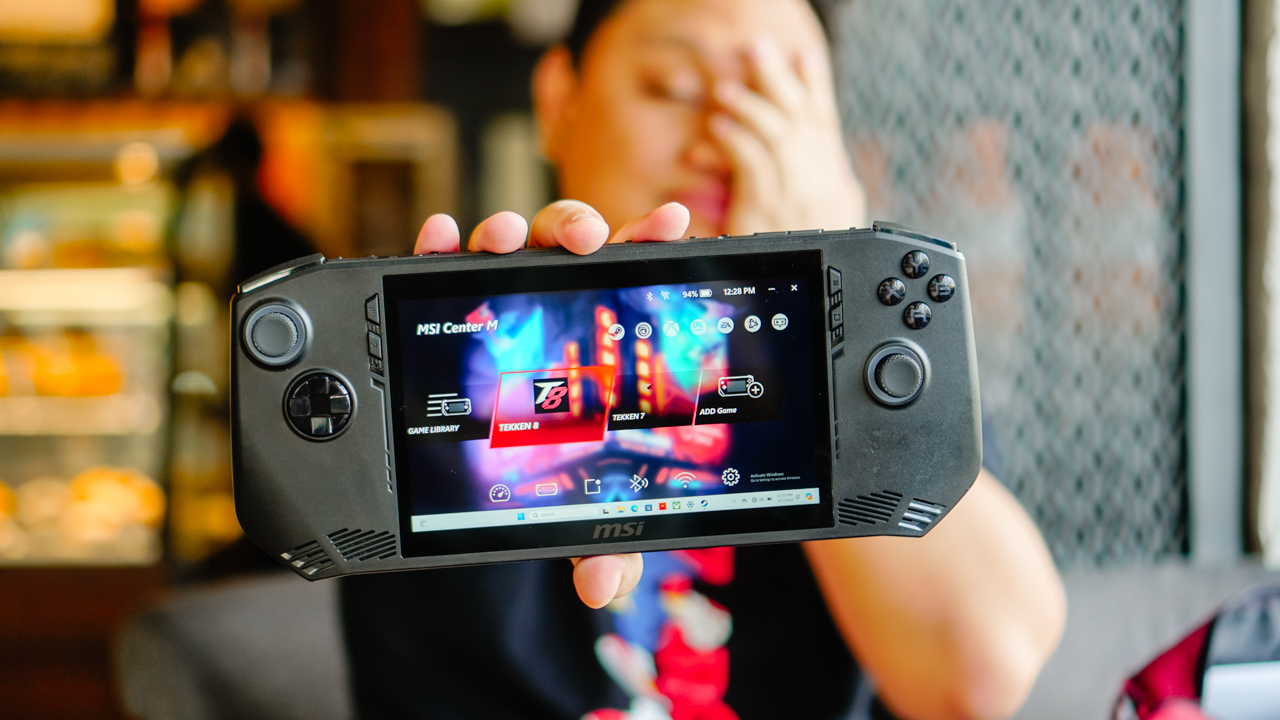Gaming
Detroit: Become Human review: Create-your-own-adventures are back
This is your story

Throughout video game history, the element of choice has never factored prominently towards a game’s progress. Even with an abundance of gameplay elements, video games always corral you to its own desired ending.
With Detroit: Become Human, developer Quantic Dream completely leaves that option to you. Besides a unique cinematic experience, Detroit brings a complete create-your-own-adventure set inside a near-future sci-fi world.
Welcome to Detroit
Like its predecessors Heavy Rain and Beyond: Two Souls, Detroit: Become Human mixes its plot seamlessly with its gameplay. Because both are so intertwined, it becomes impossible to talk about one without the other.
Detroit brings us to its eponymous city in 2038. Despite being set two decades into the future, the Motor City doesn’t differ greatly from how it is now. Cars, houses, and clothing styles strangely look the same. However, for all its similarities, the Detroit (and everywhere else) of the future differs in one crucial aspect: artificially intelligent androids exist.
As predicted, humanity has invented compliant and intelligent robots that can do our bidding as servants, companions, and even occasional lovers. Unfortunately, things aren’t as smooth as they seem. Everywhere, androids have started to rebel against their masters. Humanity would call them “deviants.”
In Detroit, you control three androids portrayed through their own respective points of view. Connor is a prototype police android tasked with investigating why androids are turning deviant. Kara is a housewife managing an abusive father’s house and his daughter. Markus is a companion robot caring for an aging artist.
Three-in-one
With three characters, Quantic Dream created three distinct perspectives to separate each story from the other. Besides three collaborative ones, each chapter takes on a different tone and theme.
From gameplay elements to the soundtrack, each perspective is its own story. Even if you isolate them as separate stories, they can still exist individually as an adequately drawn game.
For the most part, every character is isolated in its own world. Detroit successfully created different moods for each story. Connor’s story and gameplay takes on a CSI vibe. Kara’s story has a more familial vibe. Finally, Markus’ story has a more revolutionary tone.
Sigh-filled sci-fi
A well-written science fiction story is always an excellent medium to depict a cautionary tale of the future a la Black Mirror. Like that show, Detroit starts off with an optimistic, well-rounded vision of the almost-near future. In that vision, androids have elevated humanity into new technological levels.
Unfortunately, this breath of fresh air eventually degrades to an on-the-nose civil rights story. From the onset, Detroit already hints that android rights lack the same modicum of respect that human rights do.
While civil rights stories shine in the spotlight today, Detroit hammers it down a little too much. Case in point, the story’s android rights movement uses too much historic taglines like “we have a dream” and “we think therefore we are.” Despite its create-your-own nature, Detroit really wants you to care about its androids.
For what it’s worth, its background worldbuilding excels. Through in-game magazines and TV screens, the game explores other facets of 2038’s world — politics, sports, interpersonal relationships, and transportation.
Do choices really matter?
Thankfully, yes. As with Quantic Dream’s other games, Detroit features a vast river of branching paths. Every decision — whether major or trivial — affects future chapters. Even missing a single slip of paper in one scene blocks you from significant decisions in future scenes.
Despite the allure of unlocking every option possible, the game naturally blocks you from achieving — or at least, unlocking — every option. Some scenes even lock users into time limits, both explicitly shown and hidden.
Further, developers have also highlighted the game’s permadeath options. A persistent worry, however, is if Detroit will have copouts when it deals with death. Thankfully, death is a real option in the game. In my first playthrough, a key character didn’t make it to the end credits. While there are some copout moments, permadeaths for both side and main characters remain a possibility throughout.
Fortunately, Detroit shows you which branches and options you’ve unlocked during your playthrough. The developers adamantly encourage gamers to finish a playthrough first before backtracking into new branches. However, the temptation to replay a chapter is always there.
Press X to pay respects
Unlike most games, Detroit does not have a standard verb set. Besides the traditional movement stick and some interfaces, there are no dedicated run, use, and shoot buttons. Random prompts often appear to perform certain actions.
Usually, this isn’t a problem. In a laidback investigation portion, prompts are easy enough to decipher. However, as is the norm with Quantic Dream, the game also includes nerve-wracking quick-time events (QTEs) to get through action and chase scenes. While this is the best use of the janky controls, it’s not the best way to tell a story. The harried pressure to press the right button in time often takes away from the game’s cinematic element.
Realistic dolls in an empty dollhouse
The video game industry has come a long way from the polygonal character designs of yesteryear. Detroit pushes that boundary even further with its motion-captured performances. From cinematic cutscenes to trivial fidgets, Quantic Dream created extraordinarily realistic characters. The three main characters even share an uncanny likeness with the actual actors who play them.
Unfortunately, Detroit’s background visuals are less desirable. With interactable elements scattered throughout a scene, the game often plays out like an old-school point-and-click adventure game. However, they lack the random charm of those lovable games. Besides the actual objectives, Detroit’s backgrounds feel blank and empty. Even if they’re filled with details and background actors, neither Connor, Kara, nor Markus can interact with them other than just walking past. For a game that puts the premium on character design, Detroit falls short on delivering a thriving physical world.
Regardless, with its choice-driven narrative and superb character design, Detroit: Become Human marks a turning point for video games. It opens the industry as a medium for cinematic but interactive storytelling.
Despite its flaws, Detroit: Become Human is still a loving homage to the choose-your-own-adventures and point-and-click games of before.
SEE ALSO: Step into androids’ shoes in Detroit: Become Human

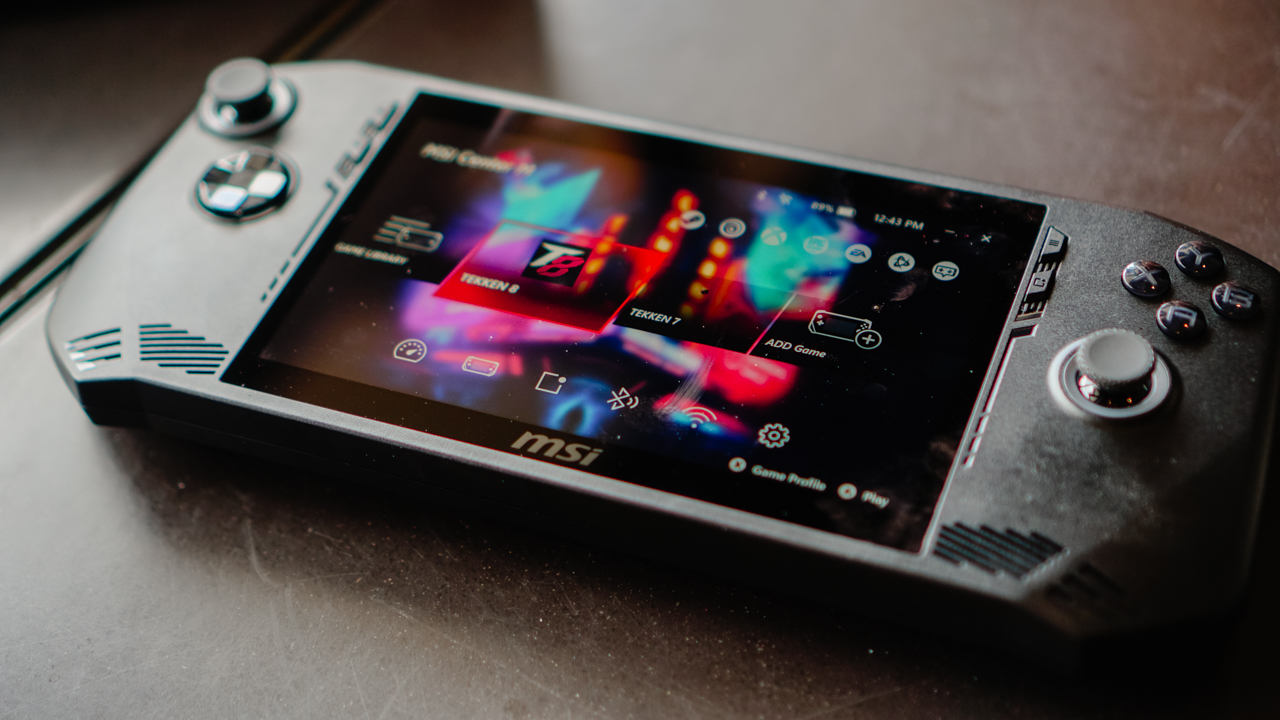
The MSI Claw is the latest gaming handheld from a major PC and laptop brand. The competition in this emerging gadget segment is tighter than ever. So, what is it about the MSI Claw that can scratch your gaming itch? Here’s a quick list.
Best grip in the game
One quick glance and it’s hard not to compare the claw with another popular gaming handheld. But a closer look and actually holding the thing will reveal that its grip easily feels better.
It has a slightly deeper groove that makes it easier to hold. So, MSI’s “Grip and Game” tagline isn’t all talk. Its design truly does provide one of the better feeling handles among its competition.
The overall design makes sure it’s made for extended gameplay sessions. The buttons are where you expect them to be. That includes the four mini buttons on the upper edges of the screen. These are the View, MSI Center M, Menu, and Quick Settings buttons.
In addition, the face buttons and d-pad all feel great. The face buttons, in particular, feel comparable to those of regular console controllers.
The rest of the buttons and triggers have a very satisfying tactile feel. It also uses Hall Effect technology to get rid of any stick drift issues.
Up top, you’ll find the power button, MicroSD Card slot, Thunderbolt 4 USB-C port, audio jack, and the volume buttons. These are intuitively placed and just makes sense given the overall design approach.
As cliché as it sounds, you’ll really think you got your money’s worth once you hold, touch, press, and grip the MSI Claw.
Dragon Vision
Now, MSI isn’t really calling it that but I thought it sounds pretty cool. A big part of the whole gaming experience is the display. Balancing resolution and frame rates is always tricky but the MSI Claw does it convincingly.
With this gaming handheld, you get a 7-inch display with a 120Hz refresh rate. Looks great on paper and it’s even better in real life. It’s the sweet spot in terms of both size and performance. There’s enough here to immerse you all while delivering a satisfying level of crisp and smoothness.
It’s comfortable to view whether you’re on the couch, on a desk table, or lying down getting a quick game in before you get some shut-eye.
Battery Life
At 53Whr, the MSI Claw has a 36% larger battery capacity than its contemporaries and promises 50% more play time.
MSI claims “elevated performance with extended endurance” using the Claw with faster charging capabilities.
These percentages are hard to measure in real life usage. What we can say for certain is that you get the expected performance and playtime typical of a handheld. That’s a little under two hours for graphically demanding titles, and close to four hours on less demanding ones.
The charging claim is legitimate. The MSI Claw juices up faster than most other handhelds, going from 20% to 100% in about a little over a K-Drama episode (roughly a little over an hour).
MSI Center M
Any self-respecting gaming handheld has its own software to make navigating the thing more manageable. While its direct competitors have an armoury crate and a space, MSI went with Center M.
The best part about MSI Center M is it puts your installed games front and center. Right when it launches, you get immediate access to the titles you have available on your machine.
MSI Afterburner is already the most commonly used app for taking a look at how your machine is performing while you play. That functionality is built-in to the MSI Claw. You can access it view the Quick Settings buttons.
Layout and functionality-wise, the MSI Center M is certainly one of the better Gaming Handheld softwares available right now.
Competitive Performance
A defining trait of the MSI Claw is that It’s the first gaming handheld to be powered by Intel Core Ultra. With it comes Intel XeSS tech. What it does is leverage AI upscaling to boost the fps of select titles.
As of launch, 50 notable games are supported. That number will certainly grow throughout the device’s lifespan. Some of the titles include Hi-Fi Rush, Dying Light 2, Forza Horizon 5, Call of Duty Warzone 2.0, Returnal, and many, many more.
Naturally, results will vary depending on the game mode you’re using. But in general, AAA games get anywhere between 10% to 45% better frame rate performance with Intel XeSS.
For our part we played TEKKEN 8 and the recently launched Horizon Forbidden West. Both graphically demanding games played relatively well on the MSI Claw. Frame rate performance on TEKKEN 8 is crucial and we got a relatively consistent fps, never dropping below 40.
Horizon Forbidden West is a much more graphically demanding game. We were able to run it in Medium Settings and while it doesn’t look as incredible, it still played relatively well with a frame rate surprising for a gaming handheld.
Extras
MSI made sure that if you wanted to, you could get some extra stuff with the MSI Claw. Its separately sold accessory set includes the Claw Travel Case, Nest Docking Station, Claw Lanyard, and Claw Keychain.
On paper, the MSI Claw lists its ergonomic design, AI Engine, and App Player as distinct advantages over its competition.
Whether it’s the Gaming Handheld that matches your needs is still ultimately up to you. If you have the opportunity to test drive the device, we suggest you do so. That might just solidify your purchase decision.
Price and availability in the Philippines
The MSI Claw will be available in three configurations in the Philippines. There are priced as follows:
MSI Claw A1M-075PH (PhP 45, 995).
- Intel® Core™ Ultra 5 processor 135H
- 512GB NVMe PCIe Gen4x4
- LPDDR5 16GB, dual channel
- Intel® Arc™ Graphics
Claw A1M-076PH (PhP 50, 995).
- Intel® Core™ Ultra 7 processor 155H
- 512GB NVMe PCIe Gen4x4
- LPDDR5 16GB, dual channel
- Intel® Arc™ Graphics
Claw A1M-077PH (PhP 53, 995).
- Intel® Core™ Ultra 7 processor 155H
- 1TB NVMe PCIe Gen4x4
- LPDDR5 16GB, dual channel
- Intel® Arc™ Graphics
Ongoing Promotion
You can still get your own MSI Claw with exclusive bundled freebies 𝐄𝐗𝐓𝐄𝐍𝐃 until 𝐀𝐩𝐫𝐢𝐥 𝟑𝟎, 𝟐𝟎𝟐𝟒!
This feature article is a collaboration between GadgetMatch and MSI Philippines.

If you’ve been waiting for an opportunity to try Assassin’s Creed Mirage, that opportunity has come. The game is available for free trial on the PS5, PS4, Xbox Series X|S, Xbox One, Windows PC, Ubisoft Store, and the Epic Games Store. The promotion will be available from April 17 to 30.
During the Free Trial, players will have access to the first two (2) hours of the. Progression will carry over if they purchase the game.
Players streaming will be able to get and offer to their viewers an exclusive reward: Basim Valhalla Sword, if they stream during the Free Trial period. This unique sword is Basim’s weapon from his later years in England.
Discounts will also be available on PC via Ubisoft Connect only. From April 17t to 24 , Assassin’s Creed Mirage Standard Edition and Deluxe Edition will be 40% off.
Assassin’s Creed Mirage
Assassin’s Creed Mirage spins a tale centered around an already established character, rather than a blank slate like Valhalla’s Eivor. It follows Basim Ibn Ishaq, a character introduced in Valhalla. Taking place before the events of the previous game, Mirage has the assassin root out the Order in 9th-century Baghdad, a setting familiar to those who played the original title in 2007.
SEE ALSO: Assassin’s Creed Mirage review
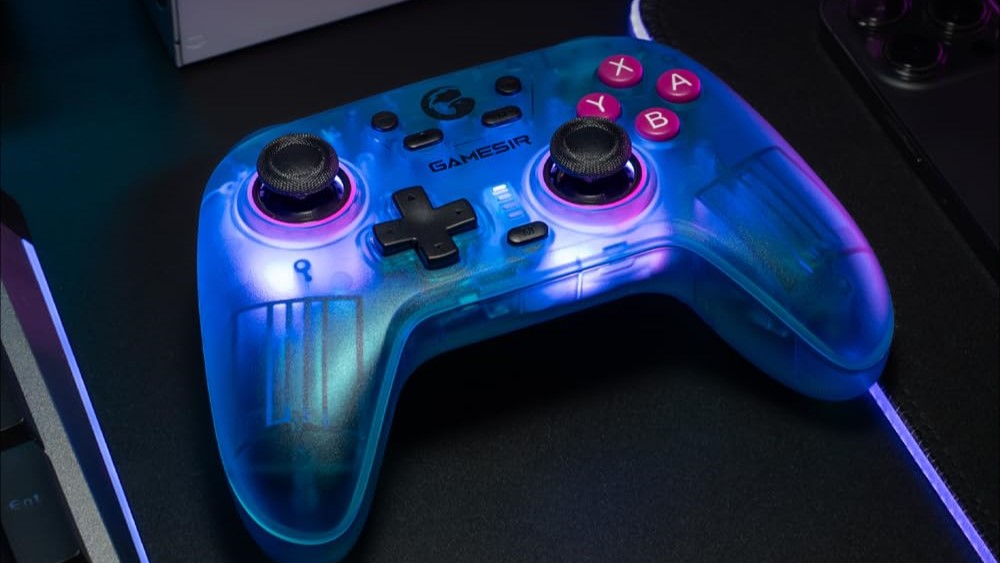
Gaming peripherals brand GameSir has introduced two new budget-friendly gaming controllers: The GameSir Nova and GameSir Nova Lite.
These controllers feature multi-platform compatibility and cutting-edge technologies, like anti-drift Hall effect sticks and tri-mode connectivity, for affordable price points.
The GameSir Nova is available for UK£ 39.99/US$ 35.99/PhP 2,100 while the GameSir Nova Lite costs UK£ 29.99/US$ 24.99/PhP 1,500.
Color options for the Nova are Neon Teal and Retro White, while the Nova Lite comes in Stellar White and Space Purple. Customers may purchase from Amazon, Amazon UK, and the GameSir website.
Ultimate multi-platform gaming controller
The GameSir Nova and Nova Lite are both compatible with multiple devices, including PC, iOS, Android, and Switch. The Nova Lite, meanwhile, can also connect to Steam Deck.
Both controllers also support tri-mode connectivity for flexibility. The Nova can be connected via Bluetooth, 2.4GHz, or a wired connection. Its Lite counterpart supports Bluetooth, a wireless dongle, and a wired configuration.
Precise, consistent gaming
With anti-drift Hall effect sticks, the Nova provides a smooth and consistent gaming experience. It uses specially optimized algorithms, and even supports motion controls to tilt, shake, or rotate for more immersion.
The Dual HD Rumble Motors in the grips also provide vibrations for real and precise feedback, whatever the game’s effects may be. Furthermore, there are two programmable macro back buttons that allows gamers to execute complex combos with ease.
The Nova Lite, meanwhile, also has analogue triggers, a 20Hz Turbo function, and two motors in the grips to cater to the user’s needs and feel.
In addition, the Lite includes a multi-function M button. Users may use this button to adjust different settings on the fly. For instance, pressing M plus the D-pad’s up and down buttons raises or lowers the vibration intensity. The sticks’ dead zones may also be adjusted to one’s liking.
-

 Accessories2 weeks ago
Accessories2 weeks agoApple Vision Pro Review: Two Months Later
-

 Features5 days ago
Features5 days agoFortify your home office or business setup with these devices
-

 Gaming1 week ago
Gaming1 week agoThe Rogue Prince of Persia looks like an ultra-colorful roguelite
-

 Events1 week ago
Events1 week agoStellar Blade: PlayStation taps cosplayers to play Eve for game’s launch
-

 Gaming1 week ago
Gaming1 week agoStar Wars Outlaws release date revealed
-

 Accessories1 week ago
Accessories1 week agoLogitech unveils G Pro X 60 gaming keyboard: Price, details
-

 Philippines2 weeks ago
Philippines2 weeks agovivo Y100 to release in Philippines on April 27
-

 Deals2 weeks ago
Deals2 weeks agoSamsung Awesome April: Deals on Galaxy A series





